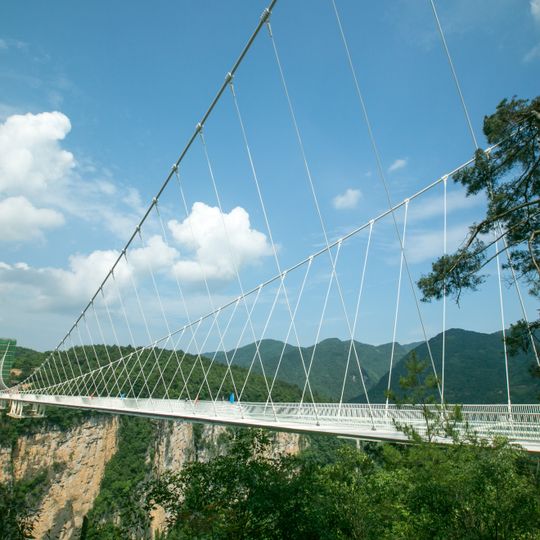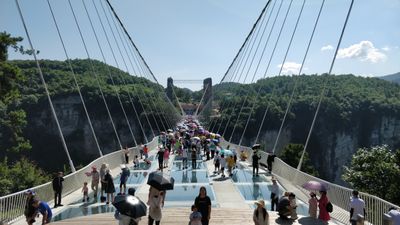Zhangjiajie Glass Bridge, Glass footbridge in Zhangjiajie National Forest Park, China.
The bridge spans 430 meters across two mountain cliffs at a height of 300 meters above the canyon floor with transparent glass panels.
Israeli architect Haim Dotan designed this engineering masterwork, which opened in August 2016 as the longest glass-bottomed bridge in the world.
The structure received the name Yuntiandu in Chinese, referring to its appearance as a white silk path floating between mountains and clouds.
The bridge operates daily from 09:00 to 15:30, requiring advance ticket booking and presenting valid identification for entrance to the facility.
The structure contains 120 glass panels measuring 5.1 centimeters in thickness and features a 285-meter bungee jumping platform beneath its surface.
Location: Hunan
Architects: Ḥayim Dotan
Official opening: August 20, 2016
Length: 430 m
Longest Span: 430 m
Width: 6 m
Part of: Zhangjiajie Grand Canyon
Address: China, 湖南省张家界市武陵源区9MXW+7FP 邮政编码: 427234 427234 张家界市
GPS coordinates: 29.39870,110.69820
Latest update: November 24, 2025 14:35

China's architecture spans from modern skyscrapers to historic city walls and engineering achievements. From the glass bridge in Longtan Valley to the TV tower in Guangzhou, these structures combine tradition with modern technology. Temples, fortifications and museums document the country's history, while new buildings like Tianjin Library and Beijing's Olympic Stadium represent the future.

This collection gathers sites where architecture and nature combine to offer extraordinary experiences. From urban observation platforms to natural geological formations, these destinations allow observing the world from remarkable viewpoints. Each location presents a different approach to altitude, whether through modern installations or natural sites. Among the destinations are TILT Chicago, a platform that tilts above the city from the 94th floor, and Trolltunga in Norway, a rocky formation protruding 700 meters above Lake Ringedalsvatnet. In China, the Zhangjiajie glass bridge spans 430 meters between two cliffs, while in Ecuador, the Banos swing enables swinging facing the Tungurahua volcano. Other sites like the Grand Canyon Skywalk in Arizona, the Royal Gorge suspension bridge in Colorado, or the Hanging Temple in Datong showcase the diversity of these places. These destinations are aimed at travelers seeking different sensations and wishing to discover panoramas from unusual positions. Some sites require good physical condition, others are accessible to all. It is advisable to check access conditions and consider your tolerance for heights before planning your visit.
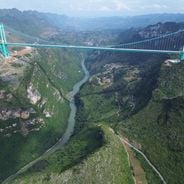
This collection presents the tallest bridges on Earth, measured by their clearance height above the ground or water below. Most of these structures are located in China, spanning deep gorges and river valleys across the provinces of Guizhou, Yunnan, Hubei, and Sichuan. The designs employ various construction methods including suspension bridges, cable-stayed bridges, and arch bridges. The collection also features notable high bridges in Mexico, India, and Papua New Guinea. These structures demonstrate how modern engineering overcomes difficult mountainous terrain and creates new transportation links. The bridges serve as critical infrastructure for regions previously separated by natural barriers.

This collection gathers bridges that hold world records for span length, defined as the distance between two main pylons. While the longest bridge in the world measures 165 kilometers in China, this refers to the maximum span covered in one continuous structure. These constructions demonstrate engineering achievements in crossing maritime straits, rivers, or valleys without intermediate supports. The Çanakkale Bridge in Turkey crosses the Dardanelles Strait with a span of 2,023 meters, setting the current record for suspension bridges. In Japan, the Akashi Strait Bridge connects Kobe to Awaji Island with a central span of 1,991 meters. In China, several bridges exceed 1,600 meters in span, such as the Yangsigang Bridge over the Yangtze in Wuhan or the Xihoumen Bridge in the Zhoushan Archipelago. South Korea with the Yi Sun-sin Bridge, Denmark with the Great Belt Bridge, and Turkey with the Osman Gazi Bridge complete this list of remarkable structures. These bridges are interesting destinations for observing modern civil engineering accomplishments. They connect cities and regions, significantly reducing travel times while offering scenic views of the landscapes they cross. Visiting them allows appreciation of the scope of work involved in constructing these infrastructures under often challenging conditions.
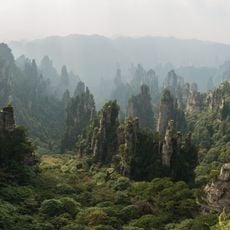
Zhangjiajie National Forest Park
28.5 km
Tianmen Mountain
44.3 km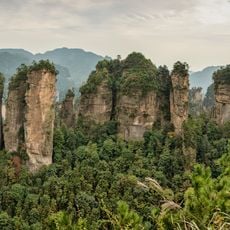
Wulingyuan
23.2 km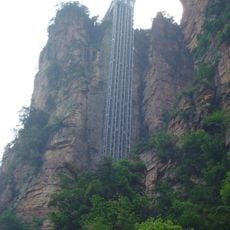
Bailong Elevator
23.5 km
Sidu River Bridge
139.2 km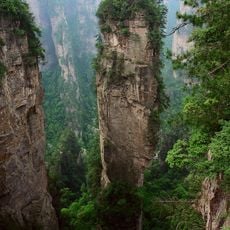
Avatar Hallelujah Mountain
26 km
Tusi Sites
83.9 km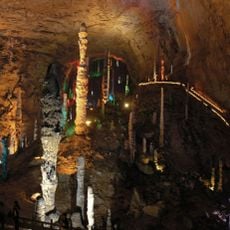
Huanglong Cave
35.4 km
Chengtoushan
98.3 km
Qing River
130 km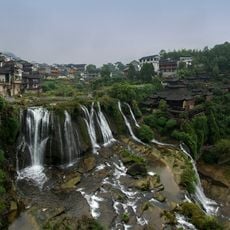
Laosicheng
83.6 km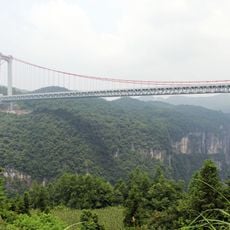
Lishui River Bridge
53.1 km
Hongze Lake Levee
139 km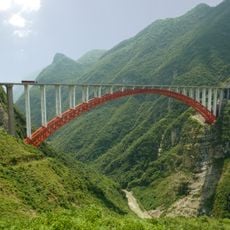
Zhijinghe River Bridge
144.9 km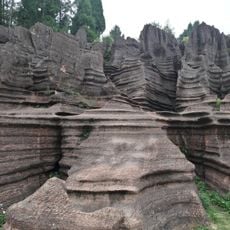
Red Stones Forest
111.2 km
Xizhou Tongzhu
103.6 km
Zhicheng Yangtze River Bridge
127.1 km
忠建河大桥
137 km
Puguang Temple
36.7 km
Yidu Yangtze River Bridge
137.5 km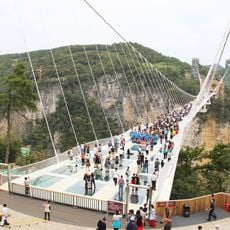
Zhangjiajie Grand Canyon
290 m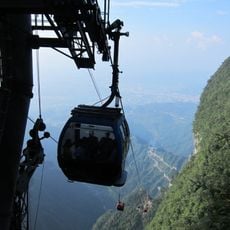
Tianmen Mountain Cable Car
44.4 km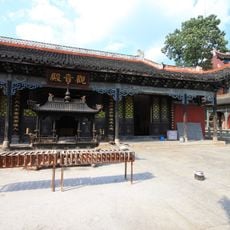
Puguang Temple
19.9 km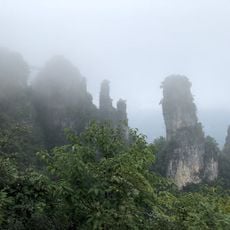
Chaibuxi Grand Canyon Scenic Spot
93.7 km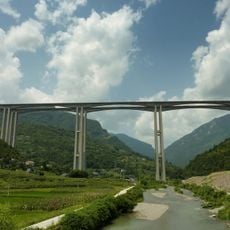
Longtanhe Bridge
137.3 km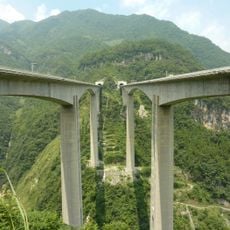
Weijiazhou Bridge
136.9 km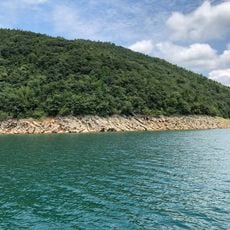
Qingjiang Gallery
126.9 km
Chexi
145.2 kmReviews
Visited this place? Tap the stars to rate it and share your experience / photos with the community! Try now! You can cancel it anytime.
Discover hidden gems everywhere you go!
From secret cafés to breathtaking viewpoints, skip the crowded tourist spots and find places that match your style. Our app makes it easy with voice search, smart filtering, route optimization, and insider tips from travelers worldwide. Download now for the complete mobile experience.

A unique approach to discovering new places❞
— Le Figaro
All the places worth exploring❞
— France Info
A tailor-made excursion in just a few clicks❞
— 20 Minutes
